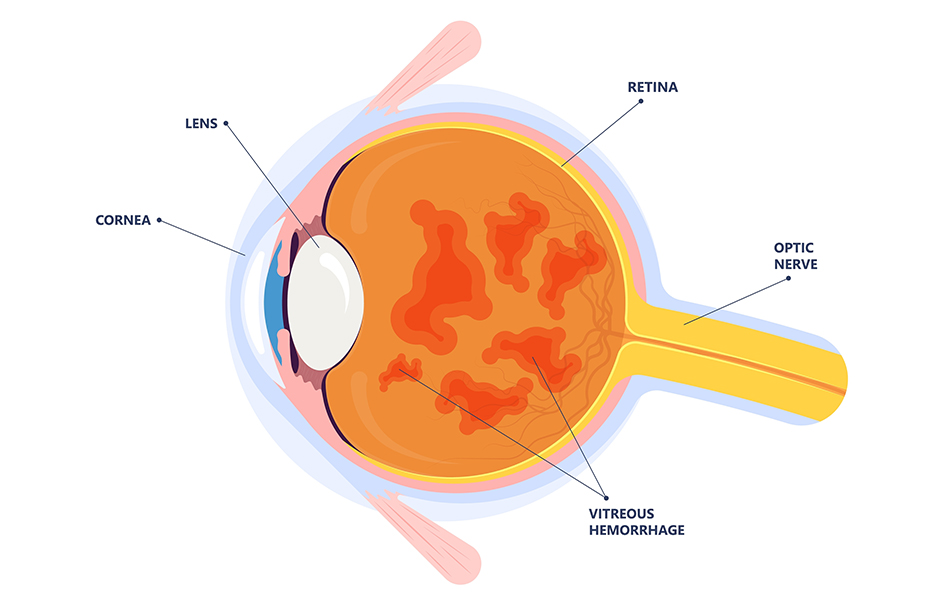Vitreous Hemorrhages
Medical Help for Vitreous Hemorrhages in Wilmington

Vitreous Hemorrhage & Tractional Retinal Detachment
In cases where laser treatment is not successful in preventing hemorrhage into the eye or when a retinal detachment from scar tissue has occurred, a type of surgery called vitrectomy is often helpful. In the operating room, a microsurgical instrument is inserted into the eye, and the blood-stained vitreous is removed and replaced by a clear, sterile solution. Fibrous bands which may cause retinal detachment are removed to allow the retina to flatten and return to a more normal configuration. Vitrectomy remains an operation performed only on eyes in which no other treatment is useful. Approximately 60 percent to 70 percent of selected eyes, otherwise hopelessly damaged, can be restored to at least ambulatory vision. Some eyes, however, actually can return to very good vision.
Protecting Your Vision
It is critical for all diabetics to have a comprehensive eye exam at least once a year to evaluate for the presence of retinopathy. Patients should remember that both macular edema and proliferative retinopathy can develop without symptoms. Patients with visual symptoms and/or visual loss, at any stage of the disease, should be evaluated without delay to find out the cause of the visual change. Early detection and timely treatment can prevent vision loss.
Summary
The overall maintenance of health is important in avoiding circulation damage to the brain, heart, kidneys and eyes. Although perfect solutions are not available for the prevention of visual loss, the outlook for maintenance of useful vision is favorable. Early detection and appropriate therapy can be sight-saving. All diabetics should work to lower their vascular risk factors. Important advice includes:
- Eat healthy
- Exercise
- Avoid smoking
- Control your blood pressure and blood sugar
- Lower your cholesterol levels
- Carefully follow your medical doctor’s instructions

